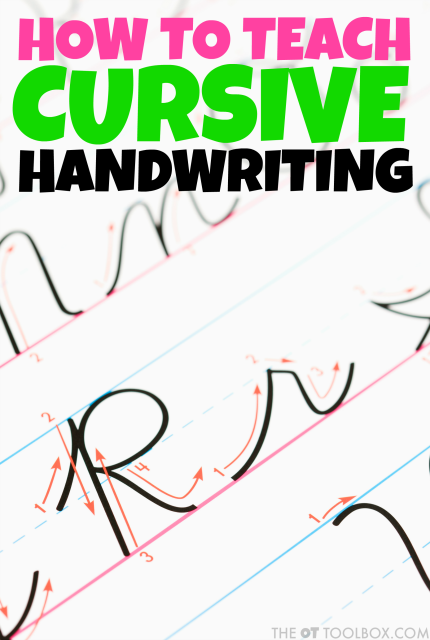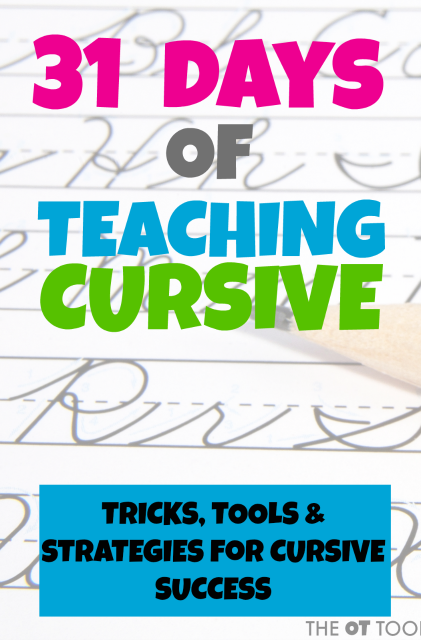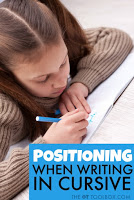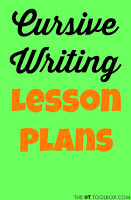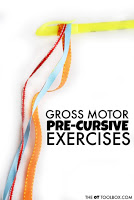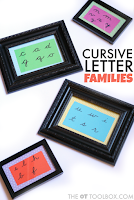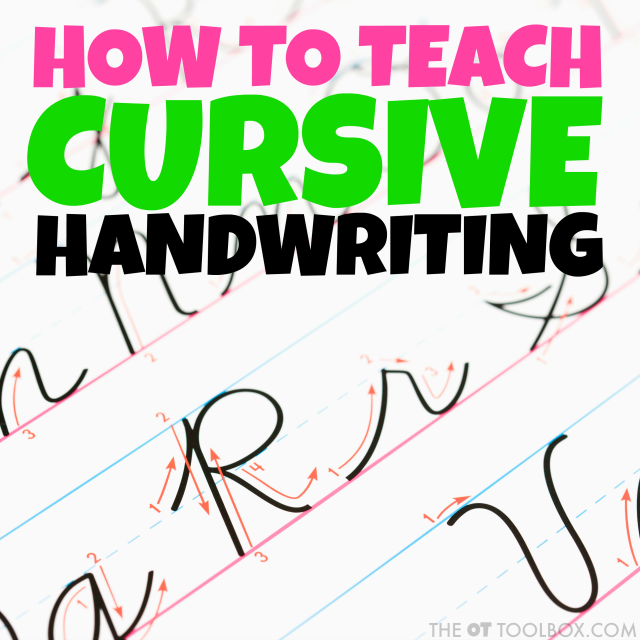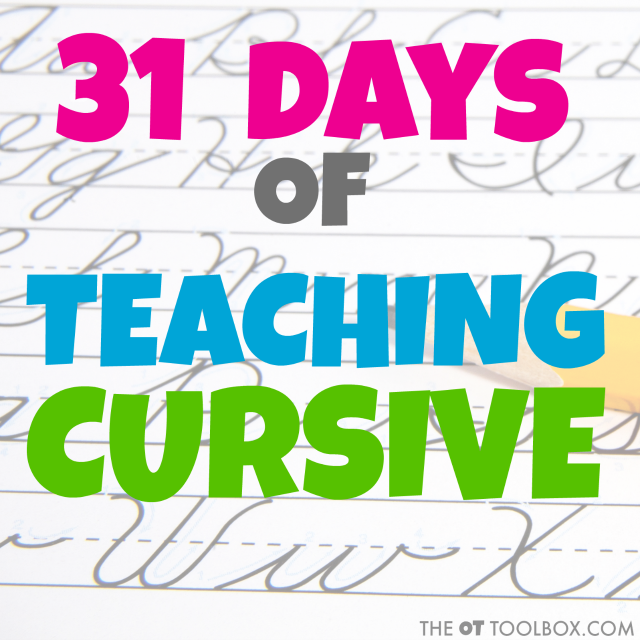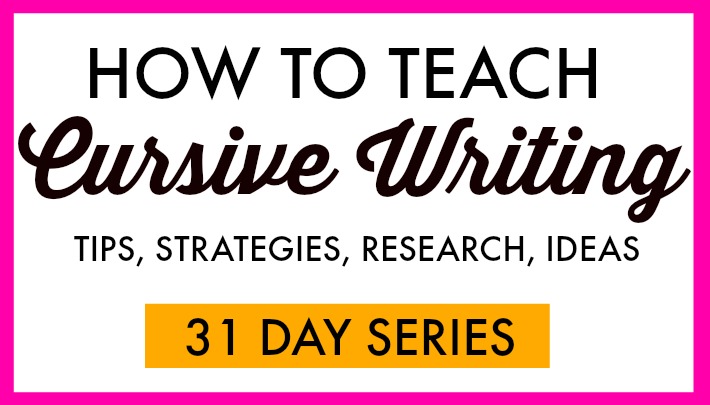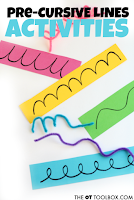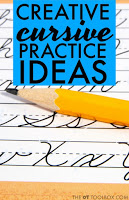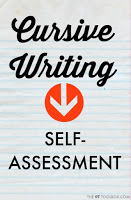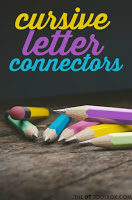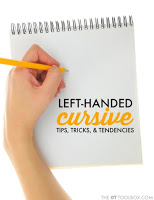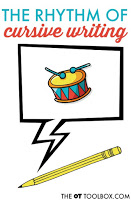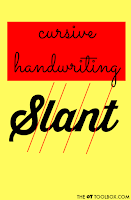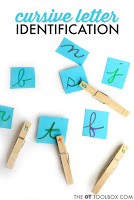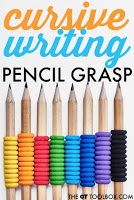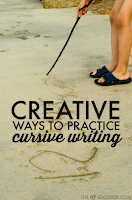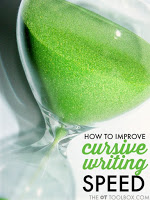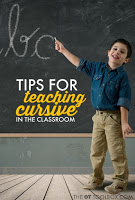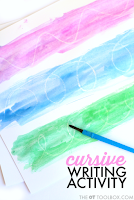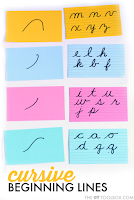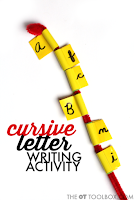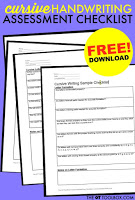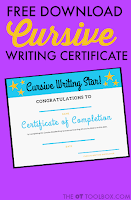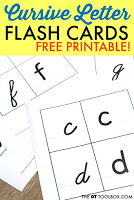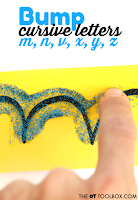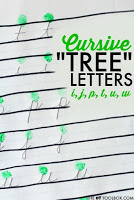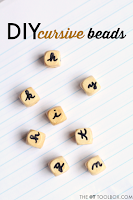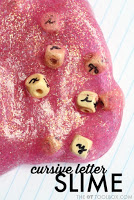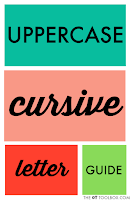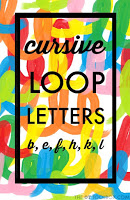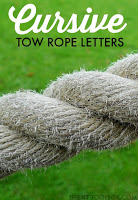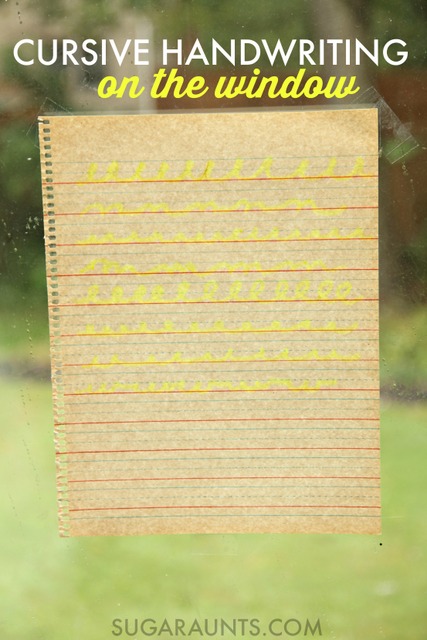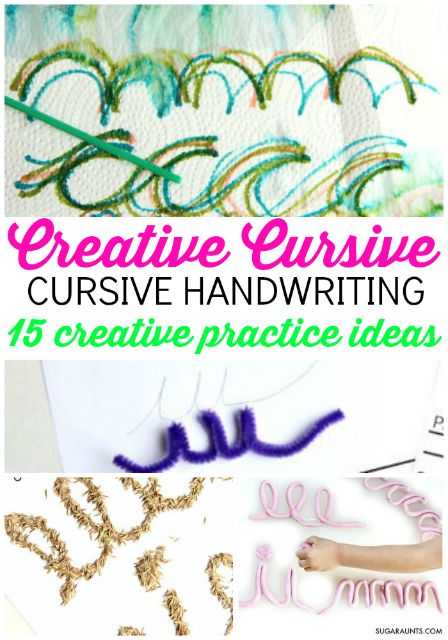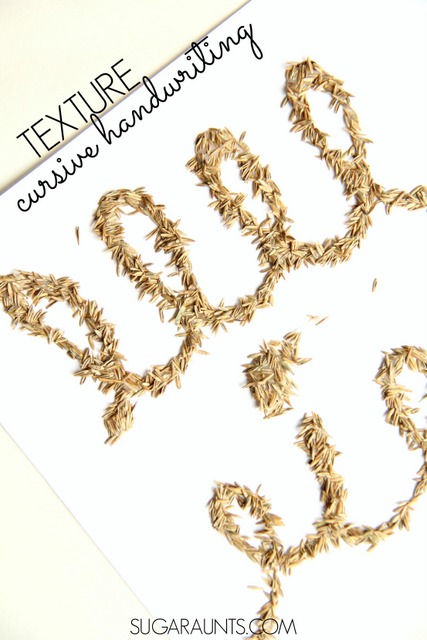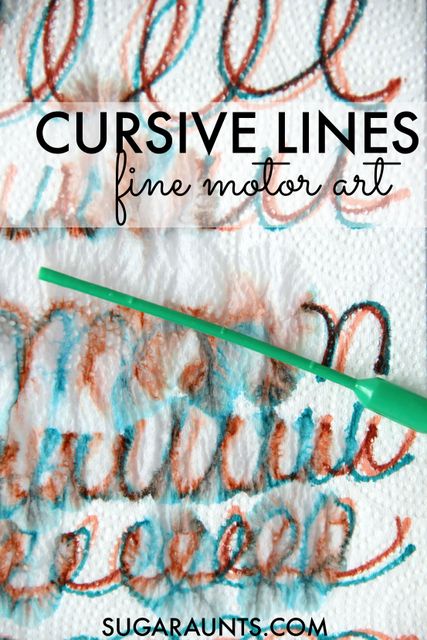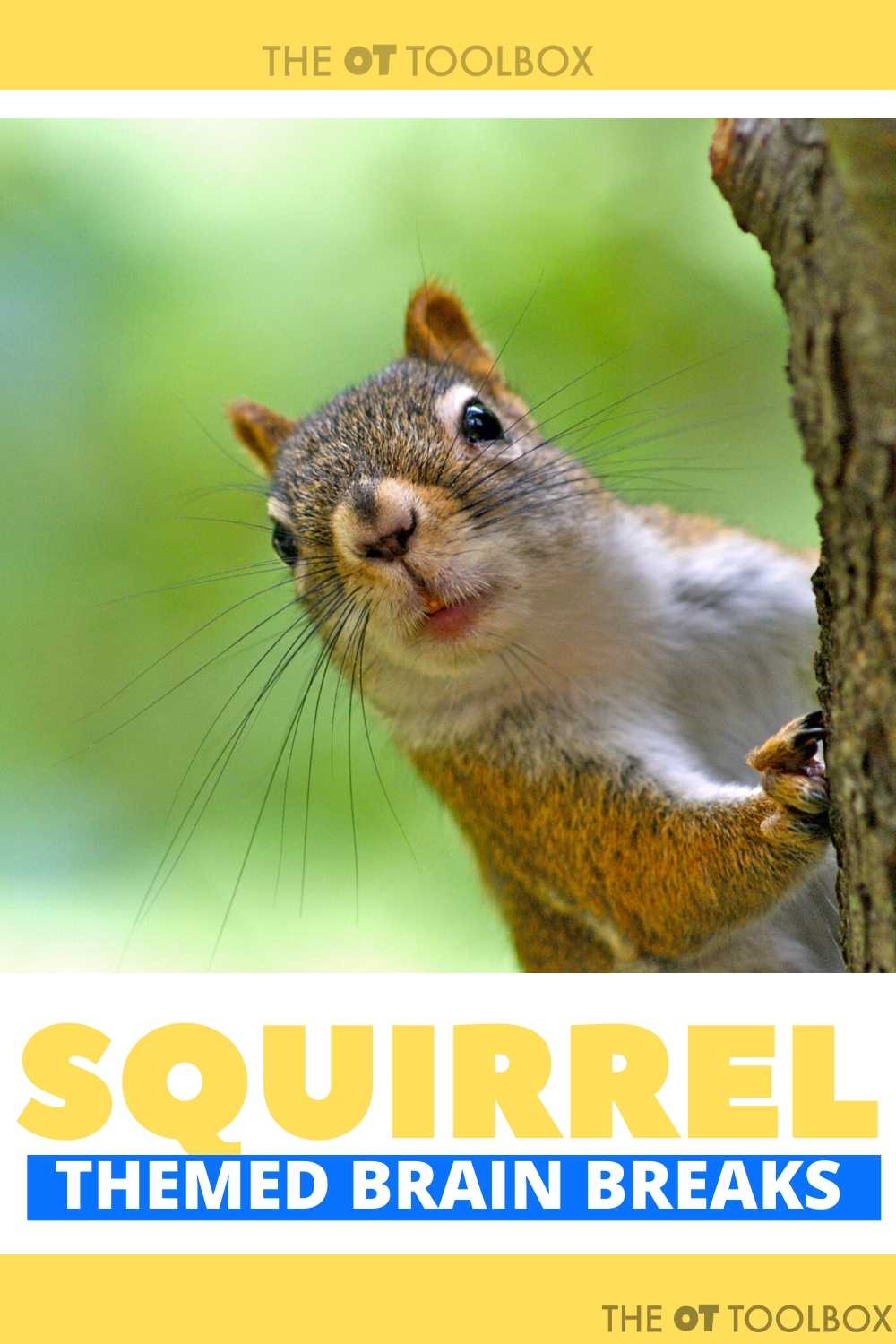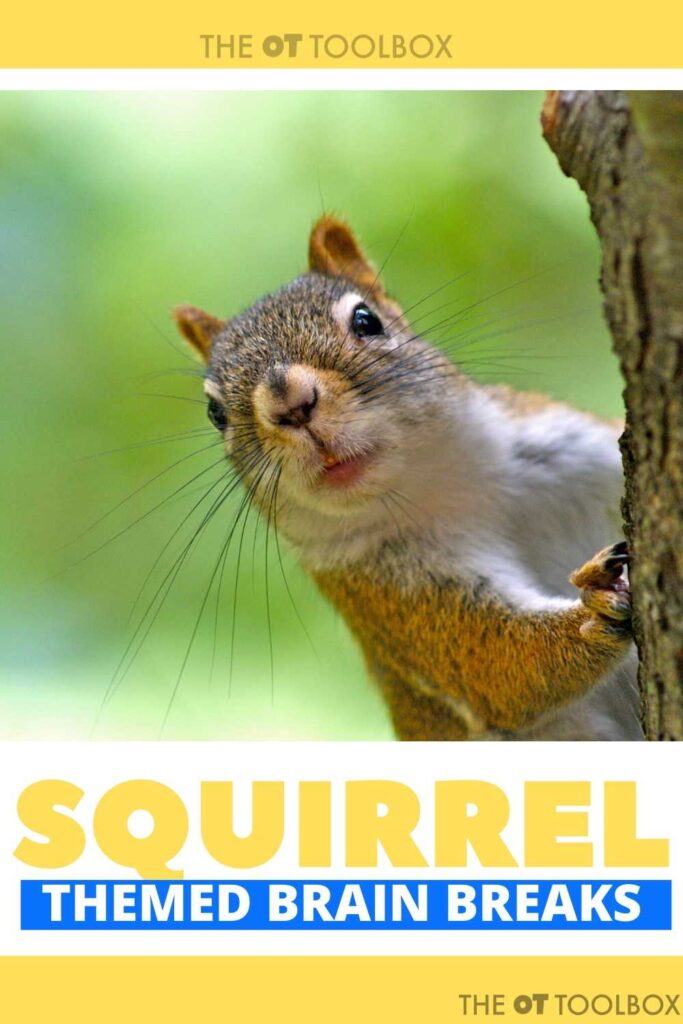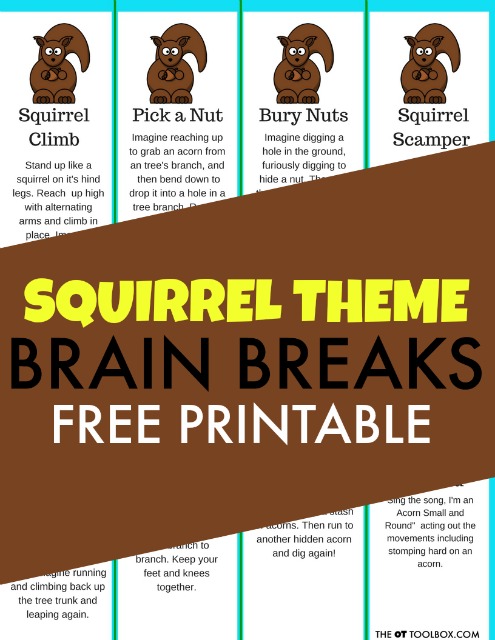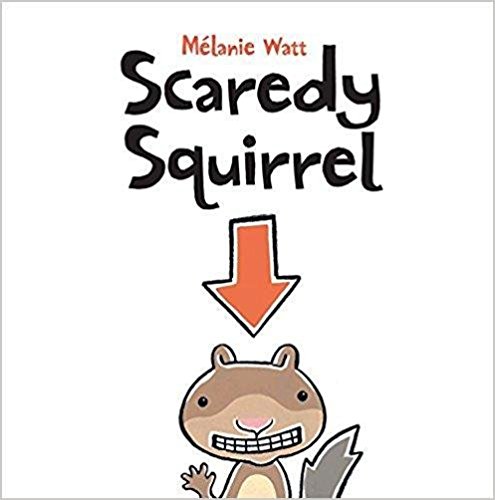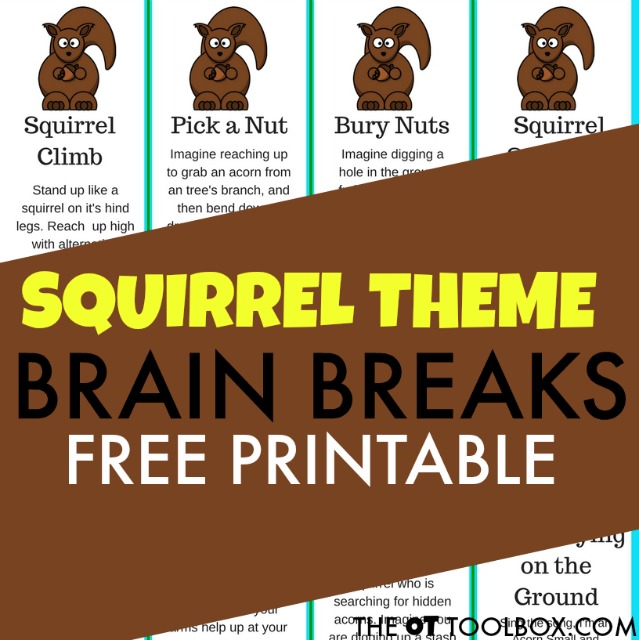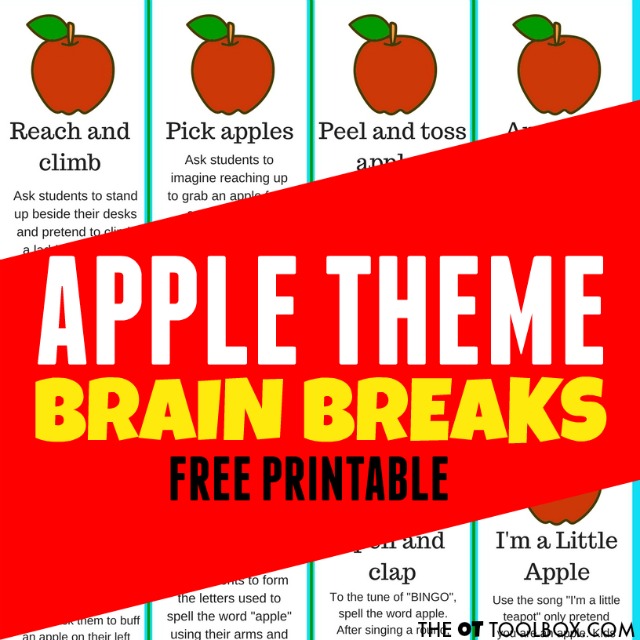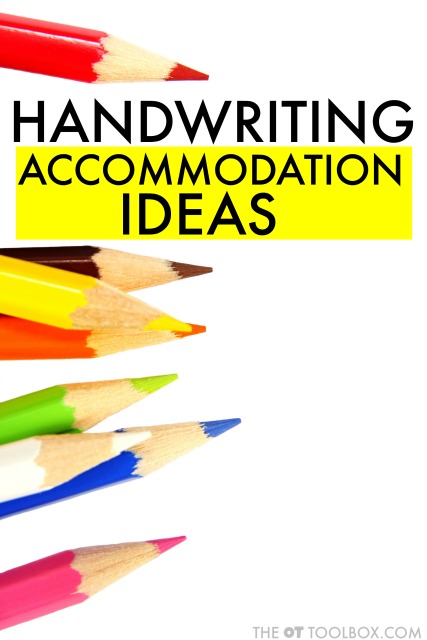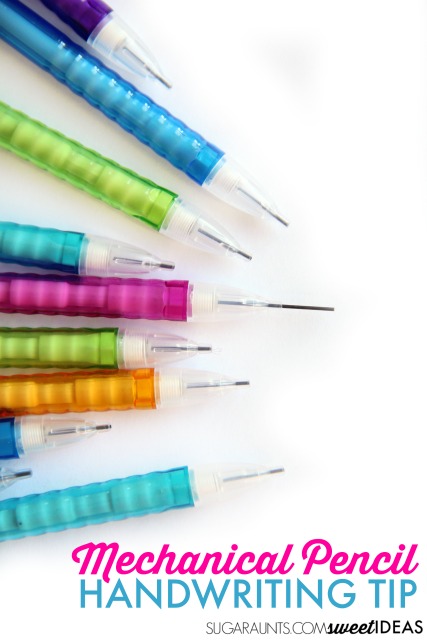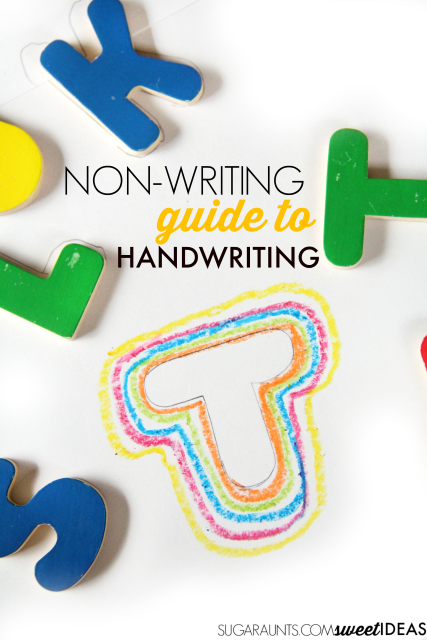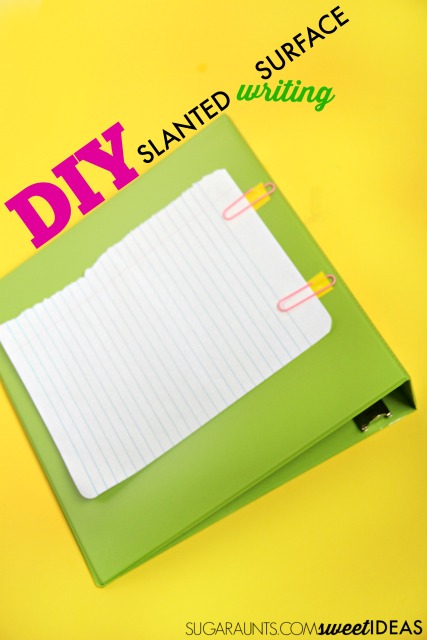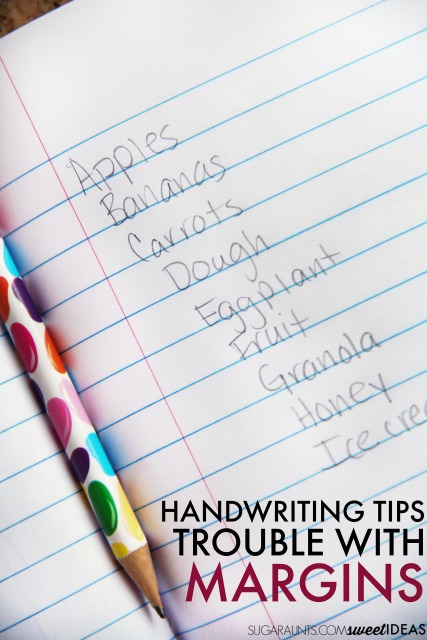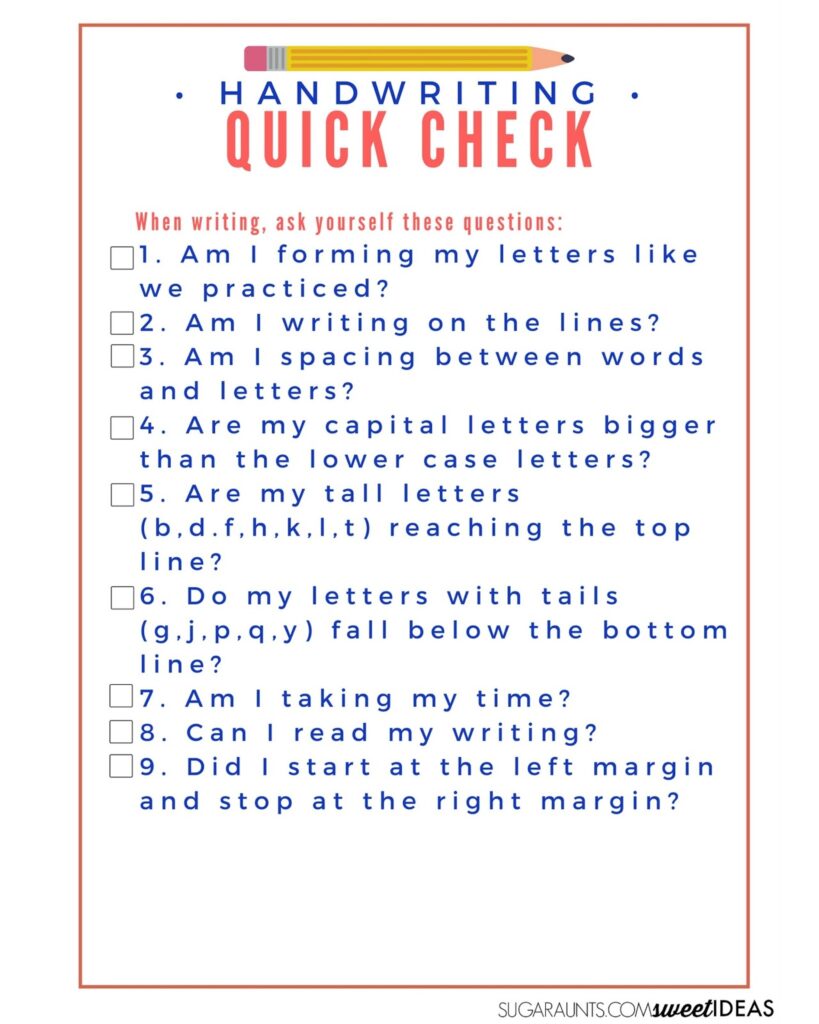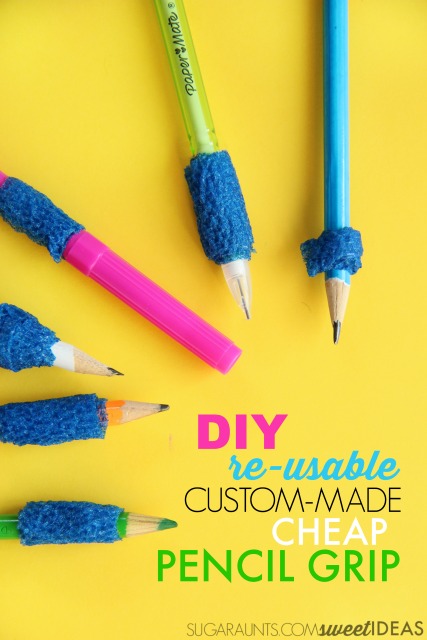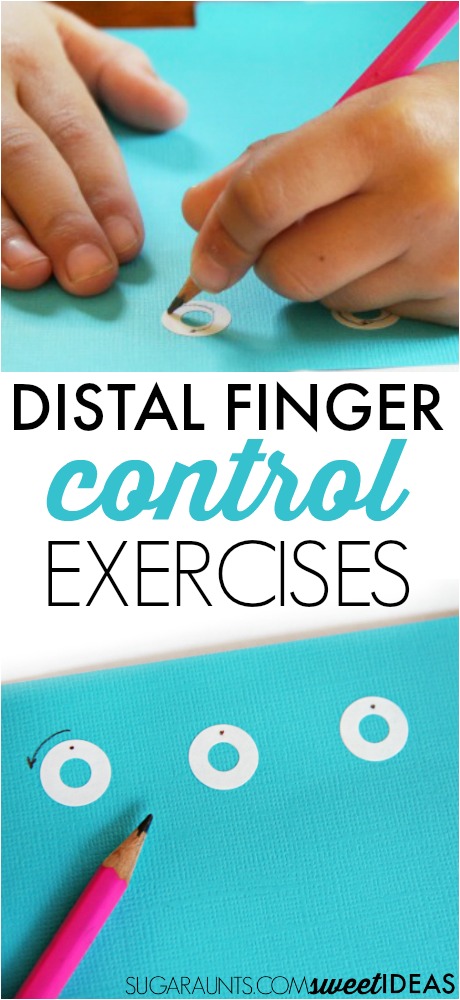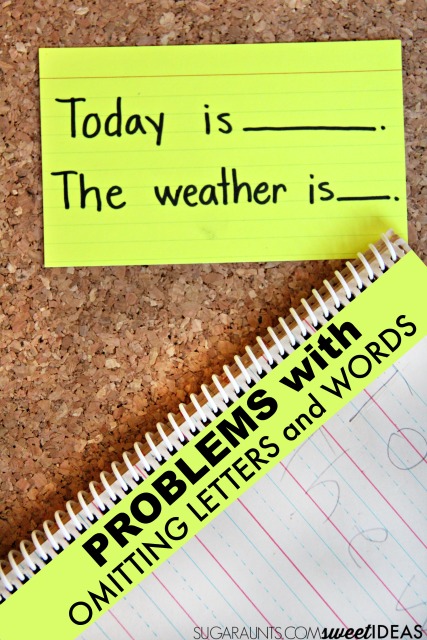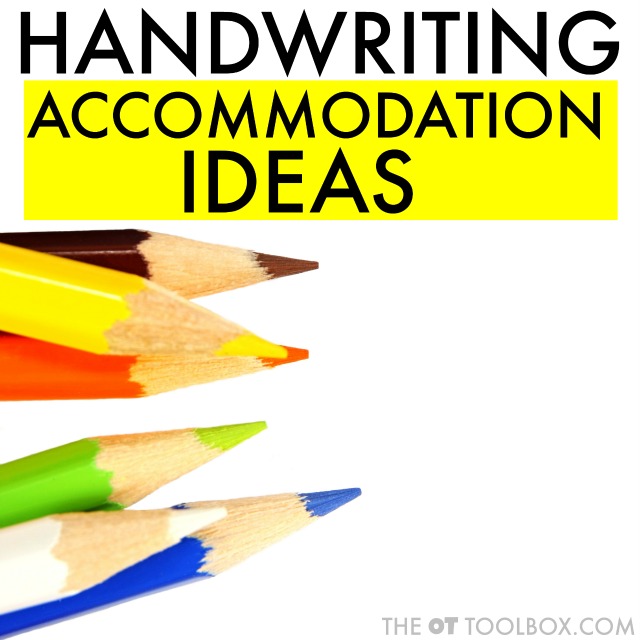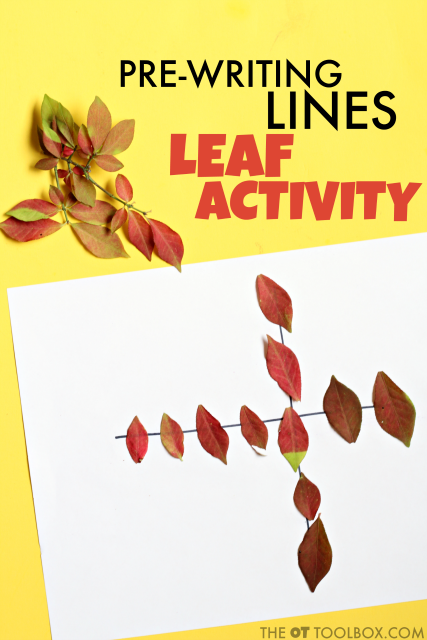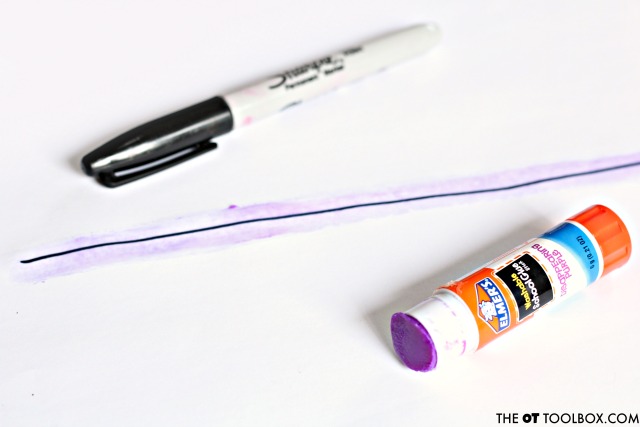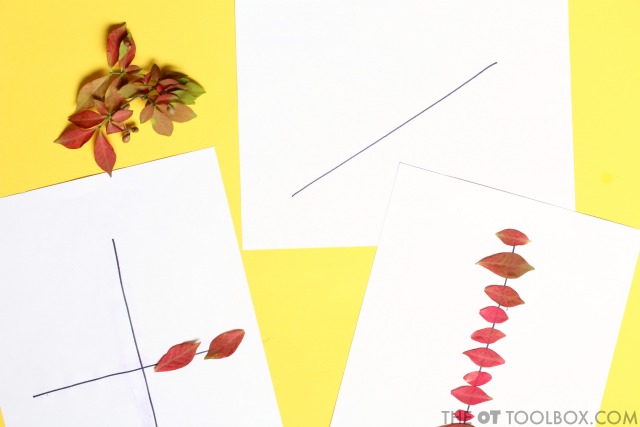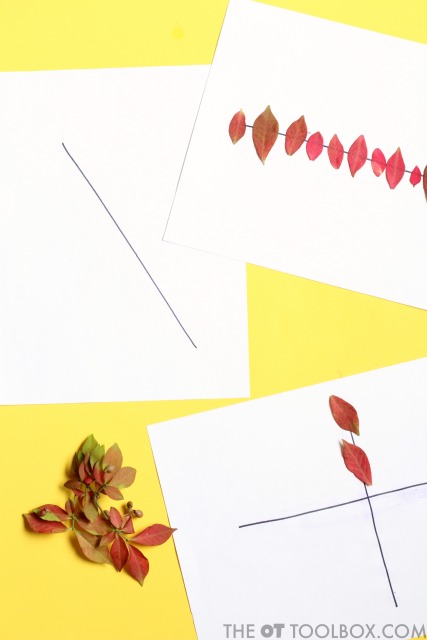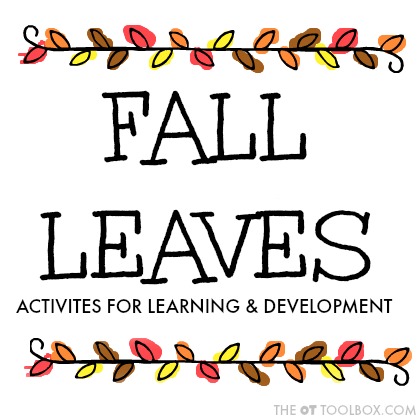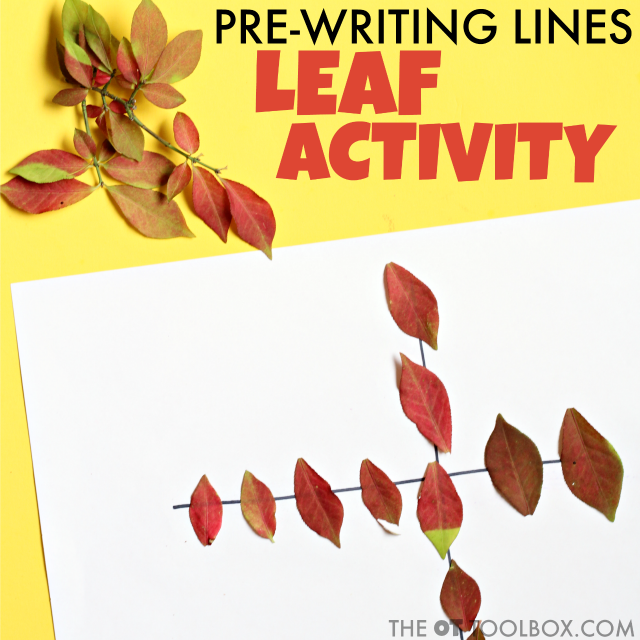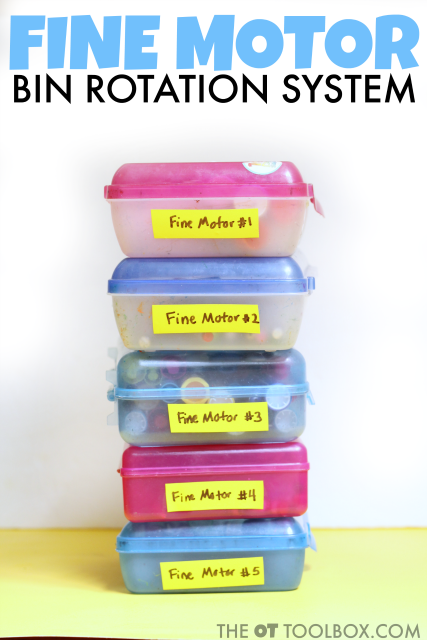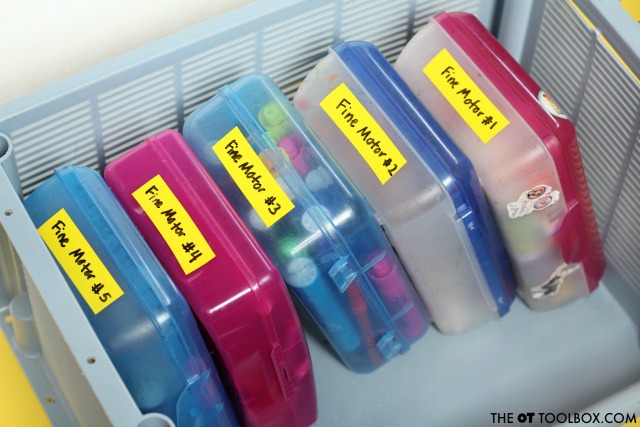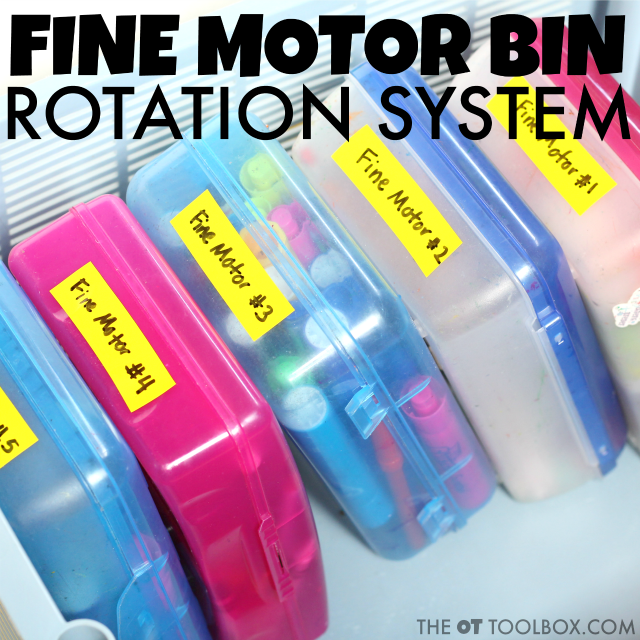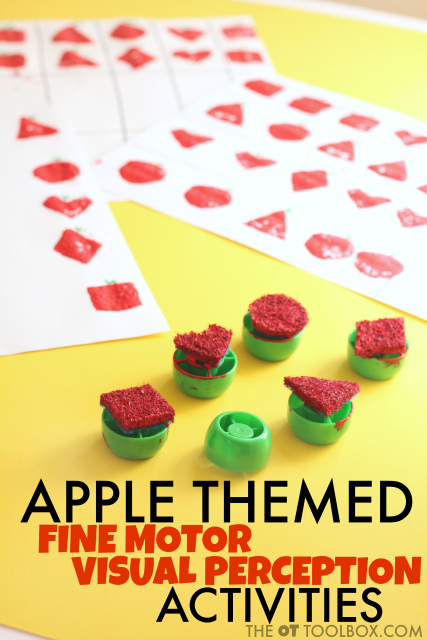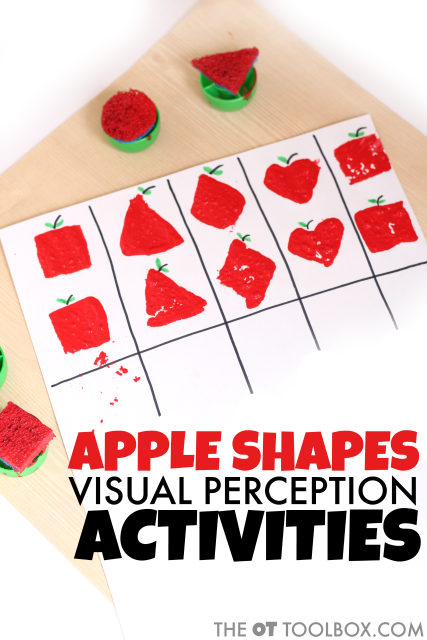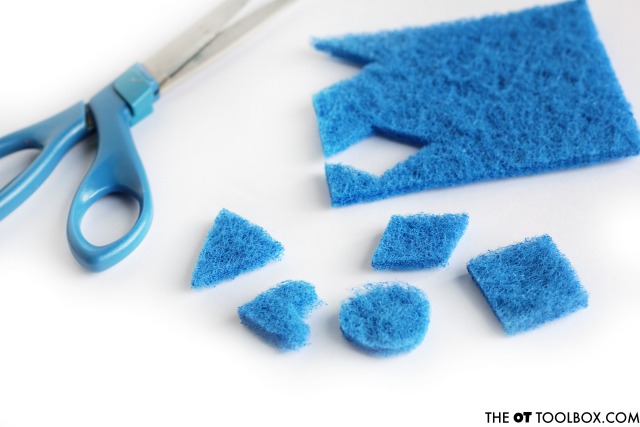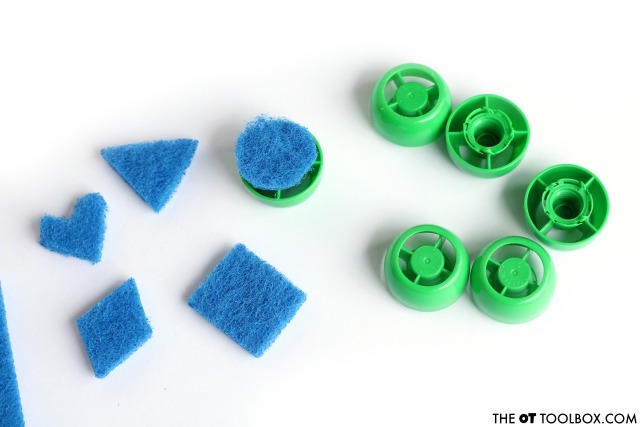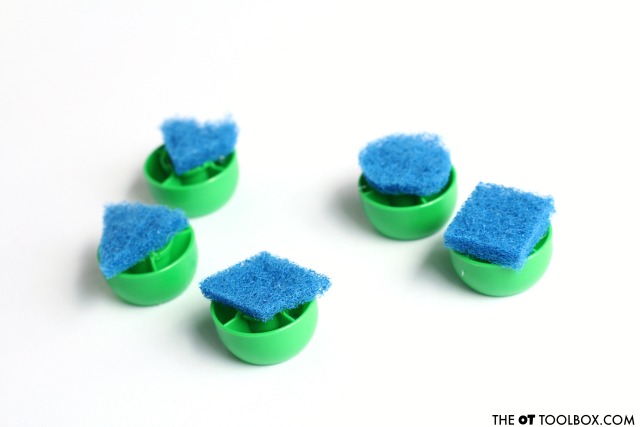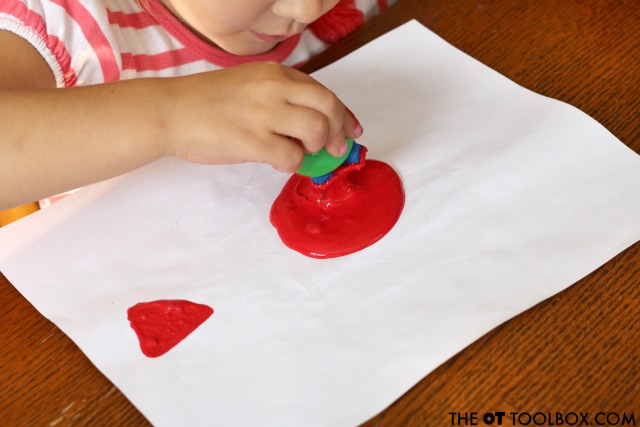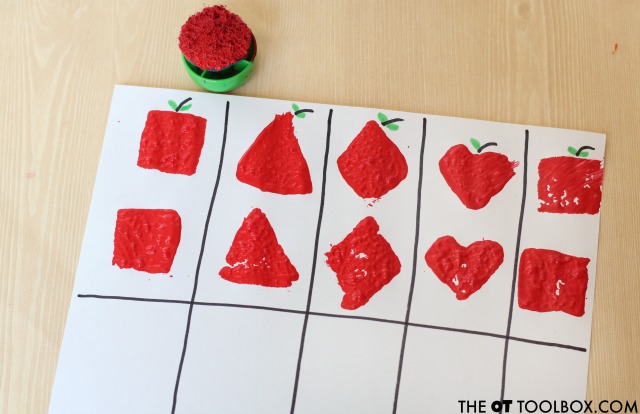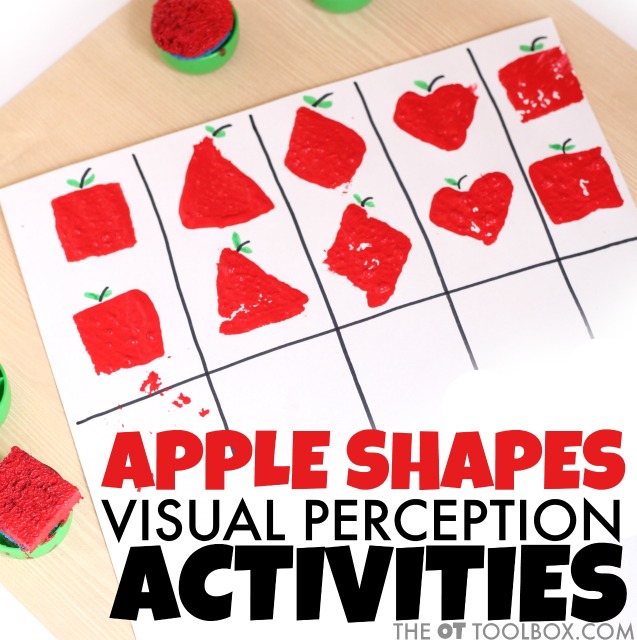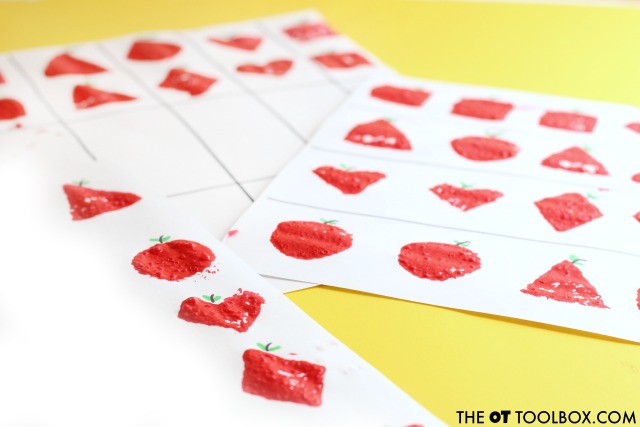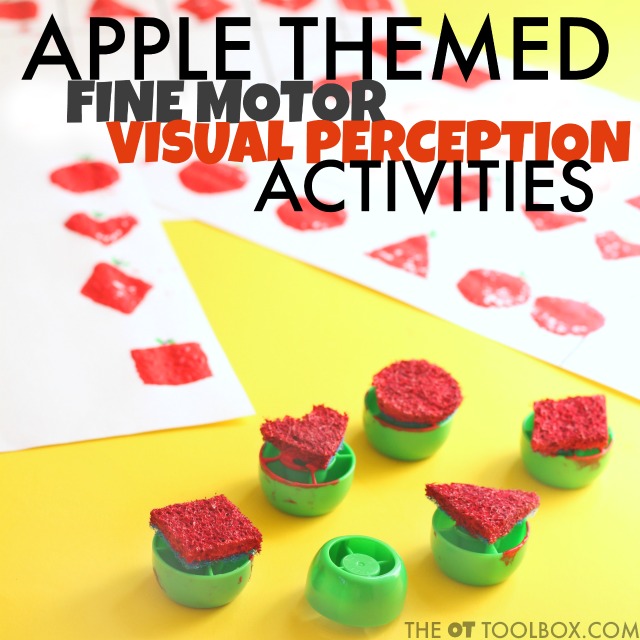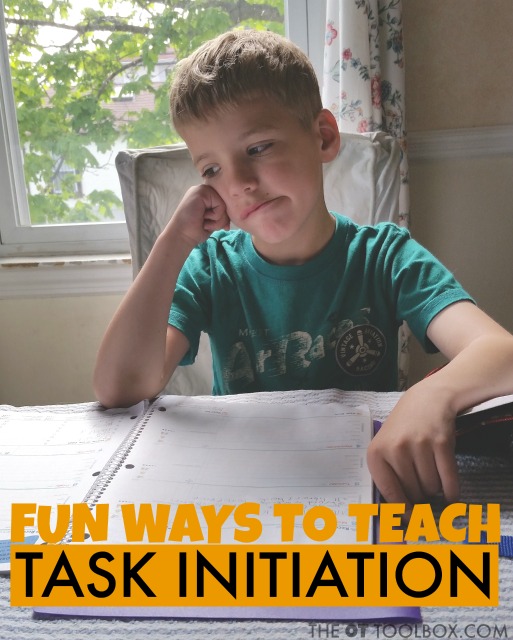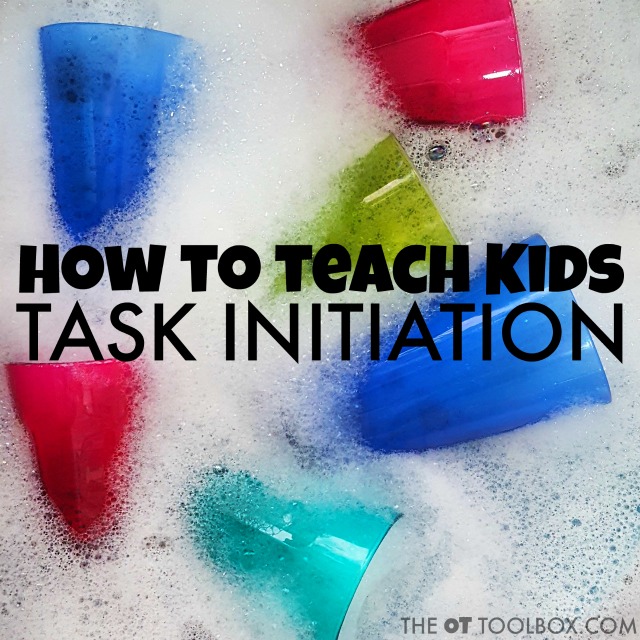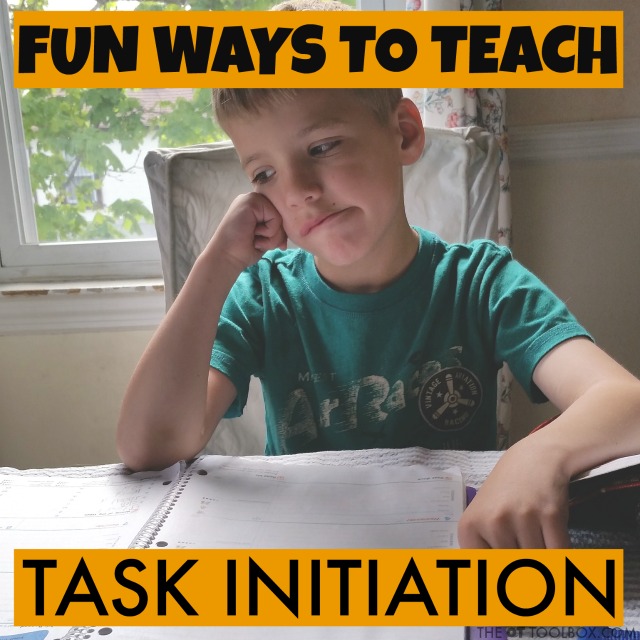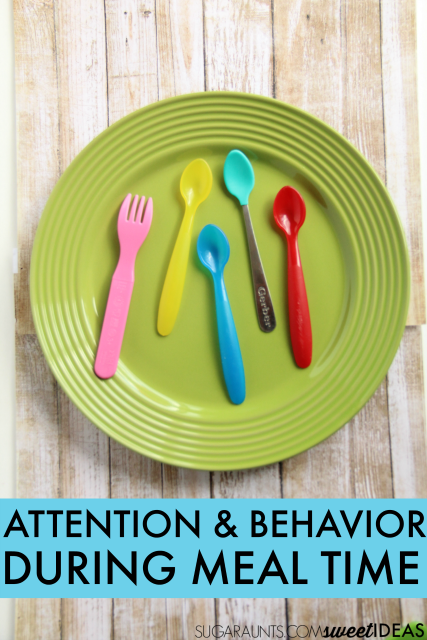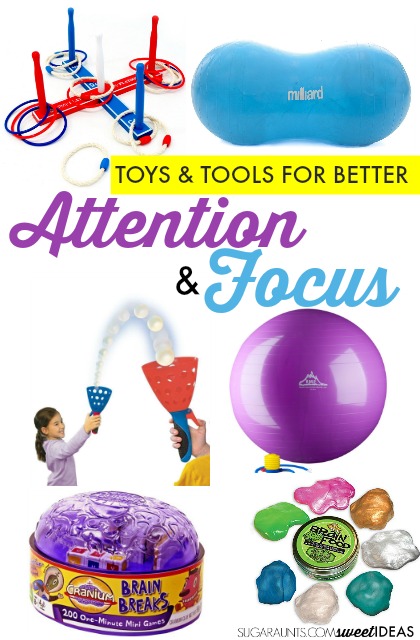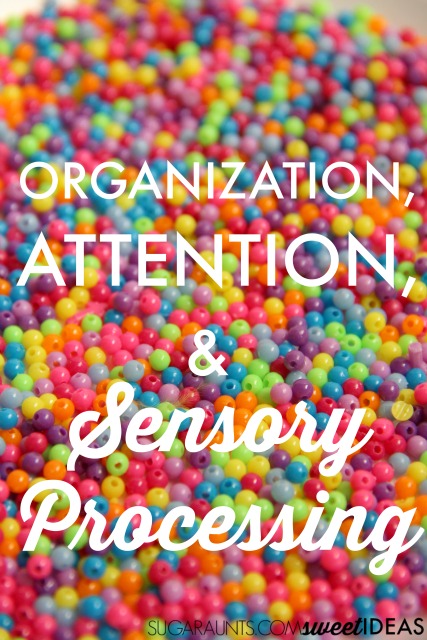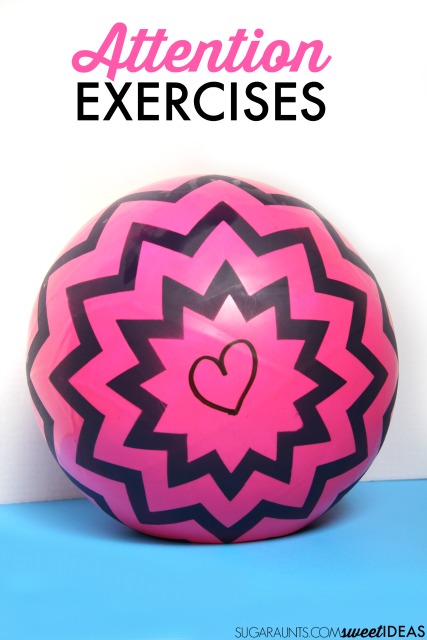During the fall months, apple activities are a fun way to sneak in skills like visual perception development or fine motor strengthening. This visual perception apple activity promotes both of those areas in a fun and creative way. We used recycled pouch bottle caps to make DIY stamps that fit in with an apple theme. If you are looking for more visual perception activities, there are a bunch on the site. Check out the additional ideas at the bottom of this post.
The apple theme is perfect for the fall season and would fit in nicely with this apple theme gross motor activity.
Visual perceptual skills are needed for so many skills! Handwriting, reading, writing, math, spelling, shoe tying, cutting with scissors…everything! You’ll find easy and fun ways to work on visual perceptual skills through play here.
Visual Perception Apple Activity
This post contains affiliate links.
You’ll need just a couple of materials for this idea:
Scissors
Hot glue gun (I love this mini version for making quick projects like this one.)
Paper
Red paint
This activity goes along with the popular children’s book, Ten Red Apples. Grab the book and do this developmental activity with the kiddos. You’ll love all of the book activities that combine children’s books with activities to promote development of functional skills and underlying skill areas here on The OT Toolbox.
To make the apple stamps:
Cut the scrub pads into different shapes. We made a square, circle, diamond, and heart.
Use the hot glue gun to attach the shapes to the pouch lids. This is a job for an adult.
Once the foam shapes are attached and the glue is dry, you can start to work on those fine motor and visual perceptual skills.
Pour a small amount of red paint onto scrap paper. Kids can use the stamps to make different shapes by pressing the foam side into the paint and then pressing paint onto paper. There are several fine motor skills being addressed with these stamps:
Apple Theme Fine Motor Activity
Show your child how to hold the stamp using their thumb, pointer finger, and middle finger. This positioning on the pouch cap encourages a tripod grasp and separation of the two sides of the hand.
Ask the child to use the stamper with their dominant hand. By holding the stamp with to paint, they are also developing and strengthening the arches of the hand.
Additionally, the size of the stamp encourages an open thumb web space which is perfect for a functional pencil grasp during handwriting tasks.
These stamps are quite the fine motor power tool!
Apple Stamps and Visual Perception Activity
Next, kids can turn those shapes into apples by copying the different parts that make an apple. We used black and green markers to add a stem and leaves to each apple shape.
To encourage development of visual perceptual skills, show kids how to copy the stem and leaves. They can then copy those parts onto their apples. Try adding one or two leaves or making the stems go into different directions or with different lengths to encourage visual memory,
visual discrimination, and visual motor skills.
Visual Perception Apple Activities
There are so many ways you can use these apple stamps to address visual perceptual skills!
Make copying sheets where kids copy the apple shapes in the correct sequence to address visual memory.
Make visual discrimination sheets where kids can identify the difference in shapes.
Work on visual spatial relations by stamping apples in different positions on a page. Kids can then tell where they see a specific shape in relation to another shape.
Address visual discrimination by making an “I Spy” type of sheet.
Work on form constancy by covering up part of an apple shape and asking kids to make the apple shape that matches that shape.
How would you use these apple stamps to address visual perception?
These apple stamps is a fun apple activity to use in coordination with a book. If you have been a reader of The OT Toolbox for long, you know that we love to combine favorite children’s books with developmental activities. For this apple activity, we joined the bloggers in the Virtual Book Club for Kids group in creating an apple themed activity that fits with the book,
10 Red Apples by Pat Hutchins.
We loved reading this book as we counted the apples on each page. The book,
Ten Red Apples is a fun way to address visual perceptual skills like visual discrimination, visual memory, and form constancy as each page contains the animals that eat an apple from the apple tree. To address visual perceptual skills with
this book, ask your child to scan the group of animals and pick out individual characters or animals on each page. It’s a visual perceptual challenge that carries over to skills like reading and writing.
For more creative ways to address visual perceptual needs, try some of these ideas by clicking on the images below.
Looking for more ways to add apple themes into learning and play? Try these creative ideas from the Virtual Book Club for Kids team:
Apple Tree Alphabet Letter Match Still Playing School
Apple Piece Names Preschool Powol Packets
Sea of Knowledge Apple Addition within 5 Dough Strips
Fingerprint Apple Counting Activity Messy Little Monster
Apple Math: Counting & Fractions Teach Beside Me
Red apple number bonds to 10 Rainy Day Mum
Apple Tree Playdough Clare’s Little Tots
Apple picking sticky wall Views from a Step stool
Baked Apples Witty Hoots
Apple Stack Game and Snack Toddler Approved
Jumping Apple Seeds JDaniel4’s Mom
Apple Theme STEM Activity for Preschoolers The Educators’ Spin On It
Glitter Apple Stamping My Bored Toddler
Apple Tree Tracing Page
Apple Farm Song with Movement My Storytime Corner
Ten Red Apples: Number Words Activities Growing Book by Book
Apple Tree Gross Motor Game Inspiration Laboratories
Apple Sewing CrArty Kids
